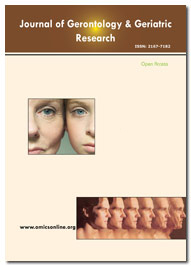索引于
- 打开 J 门
- Genamics 期刊搜索
- 安全点亮
- 参考搜索
- 哈姆达大学
- 亚利桑那州EBSCO
- OCLC-WorldCat
- 普布隆斯
- 日内瓦医学教育与研究基金会
- 欧洲酒吧
- 谷歌学术
分享此页面
期刊传单

抽象的
Influence of the Implant Prosthetic Restorations Components on the Stress Values and Distribution in Surrounding Bone - Finite Element Analysis Study
Livia Alice TÄnÄsescu, Marina Imre, Constantin DÄguci, Mircea Horia Å¢ierean, Daniel Munteanu and Oana Cella Andrei
Background: This FEA study aims to help the dentists in choosing the most appropriate implant-prosthetic components for predictable results in cases of deficient bone quality and quantity; this type of analysis can be made without biological implications.
Methods: we used 3.75 mm diameter implants, in molar mandibular area, with 8, 10, 11.5 and 13 mm lengths, straight, angled 15° and 25° abutments and a two mesio-distal dimensions metal-ceramic crown (12 and 7.6 mm). The von Mises stress distribution in bone was analyzed using IBM Autodesk Inventor 2014 software.
Results: maximum von Mises stress decreases in cortical bone from 40.3 MPa for the 8 mm implant to 35.03 MPa for the 13 mm implant and in trabecular bone from 5.073 MPa to 4.214 MPa; in cortical bone is rising from 39.07 MPa in the straight abutment to 56.2 MPa in the 25° angled abutment, while in trabecular bone from 4.78 MPa to 5.371 MPa; in cortical bone is rising from 40.3 MPa for the 12 mm crown to 46.76 MPa for 7.6 mm crown, while in trabecular bone from 5.073 MPa to 5.932 MPa.
Conclusions: using longer implants reduces the maximum stress’values in the implant-prosthetic restoration and also in bone. The stress distribution is independent to the implant’s length. Using angled abutments and also reduced mesio-distal dimension crowns raises the stress, especially in cortical bone.